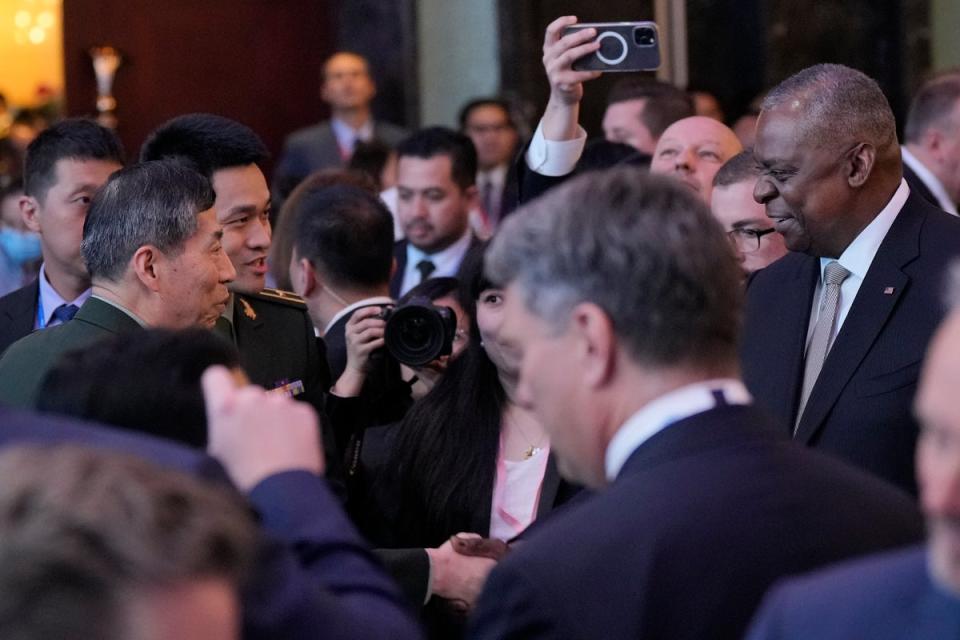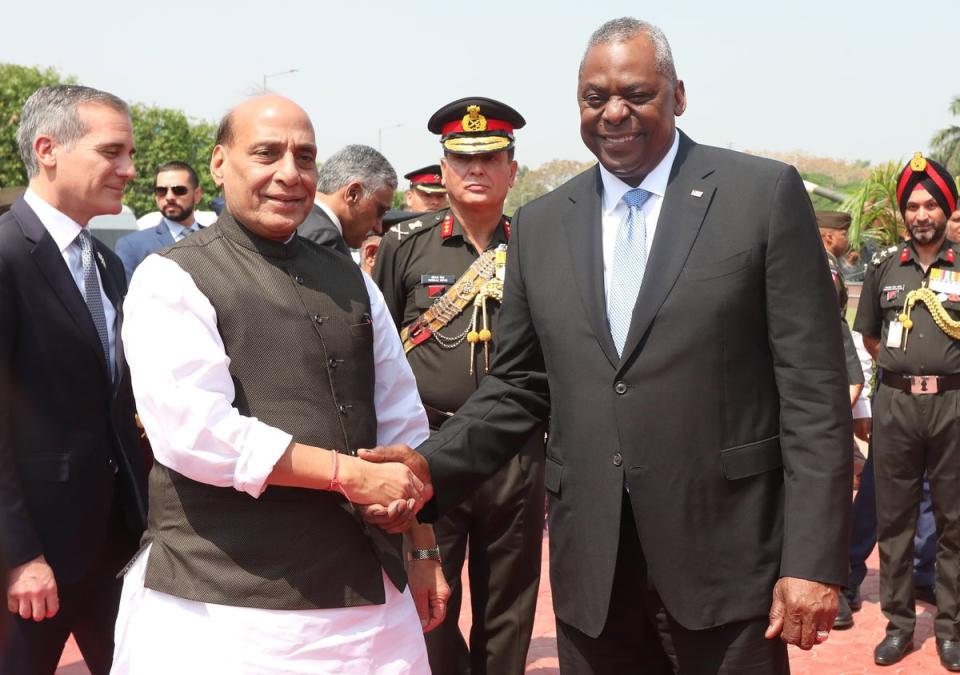China derides India’s military as no threat to Beijing and ‘unlikely to catch up’
India’s military cannot challenge China as it is “unlikely to catch up” with it in the next few decades, said the People’s Liberation Army (PLA) delegation at Asia’s top security summit, as ties between the two nuclear neighbours continue to plummet.
The delegation of the Chinese army at the Shangri-La Dialogue in Singapore said India’s current capabilities in defence manufacturing and military modernisation are insufficient to counter Beijing.
He underscored that PLA would, however, prefer dialogue, exchanges and negotiation to resolve territorial disputes. The armies of the two countries are involved in a continuing standoff over their shared border in the Himalayanan region.
“India is unlikely to catch up to China in the coming decades because of its weak industrial infrastructure, while China has built complex and systematic defence industrial platforms,” said senior colonel Zhao Xiaozhuo of the PLA Academy of Military Sciences, according to South China Morning Post.
“When you look at the Indian military’s weapon systems, what types of tanks, aircraft and warships were made and developed by Indians themselves?”
The comments were made by the PLA delegation on the sidelines of the Shangri-la security summit, that concluded on Sunday with a heated debate over the world’s most pressing security issues, including Taiwan, the South China Sea and the Ukraine conflict.
India and China’s armies, which have a history of border disputes, have been locked in a high altitude stand-off on the Line of Actual control since June 2020, when soldiers of the two militaries clashed in the deadliest skirmishes in decades on the border.
The clashes turned into a long-running standoff in the rugged mountainous area, where each side has stationed thousands of military personnel as well as artillery, tanks and fighter jets.
Mr Zhao said India would never be a “loyal partner” to the US in its Indo-Pacific Strategy because of its independent diplomatic policy, referring to India’s advocacy of the non-aligned movement (NAM).
NAM is the grouping of nations that originated during the Cold War era by countries in mainly in the Global South that considered themselves not aligned with any major power bloc or alliance. Several analysts say NAM is not relevant today.
In one of the closely watched exchanges during the summit, US defence secretary Lloyd Austin and China’s defence minister General Li Shangfu failed to have a face-to-face meeting even as the two top officials briefly shook hands.

Mr Austin chided Beijing for refusing to hold military discussions, while Mr Li accused Washington of using bullying and “deceiving and exploiting” alliances in Asia.
A day after a bitter meeting with his Chinese counterpart, Mr Austin arrived in India – the world’s largest arms importer – to discuss upgrading the US’s partnership with Delhi to counter China’s economic rise and increased belligerence.
The US defence secretary’s India visit is crucial as it is expected to lay the groundwork for prime minister Narendra Modi’s visit to Washington on 22 June, which has fuelled speculation about a possible announcement of defence contracts.
Mr Austin met Indian defence minister Rajnath Sigh and the two explored ways of building resilient supply chains, a statement from India’s defence ministry said.

They decided “to identify opportunities for the co-development of new technologies and co-production of existing and new systems and facilitate increased collaboration between defence start-up ecosystems of the two countries”.
They discussed wide-ranging issues, including regional security issues, given their shared interest in maintaining peace and stability in the Indo-Pacific, the ministry said.
“I’m returning to India to meet with key leaders for discussions about strengthening our Major Defence Partnership. Together, we’re advancing a shared vision for a free and open Indo-Pacific,” Mr Austin tweeted after his arrival in New Delhi on Sunday.
India is seeking to strengthen its domestic defence industry by acquiring new technology to build its own arsenal rather than relying on other countries for imports.
India is the largest importer of arms in the world, accounting for 11 per cent of the world’s all-weapon imports in the 2018-22 period, according to Sweden-based think tank Stockholm International Peace Research Institute.
Delhi is also appearing to pivot from its largest arm supplier Russia amid its continuing war in Ukraine.
India is looking to buy 18 armed high-altitude long-endurance unmanned aerial vehicles from General Atomics Aeronautical Systems for an estimated $1.5-2bn dollars (£1.2-1.6bn), said Rahul Bedi, a defence analyst.
Russia accounts for around 60 per cent of Indian defence equipment, and New Delhi finds itself in a bind at a time when it is facing a three-year-old border standoff with China in eastern Ladakh, where tens of thousands of soldiers are stationed within shooting distance.
Additional reporting by agencies


